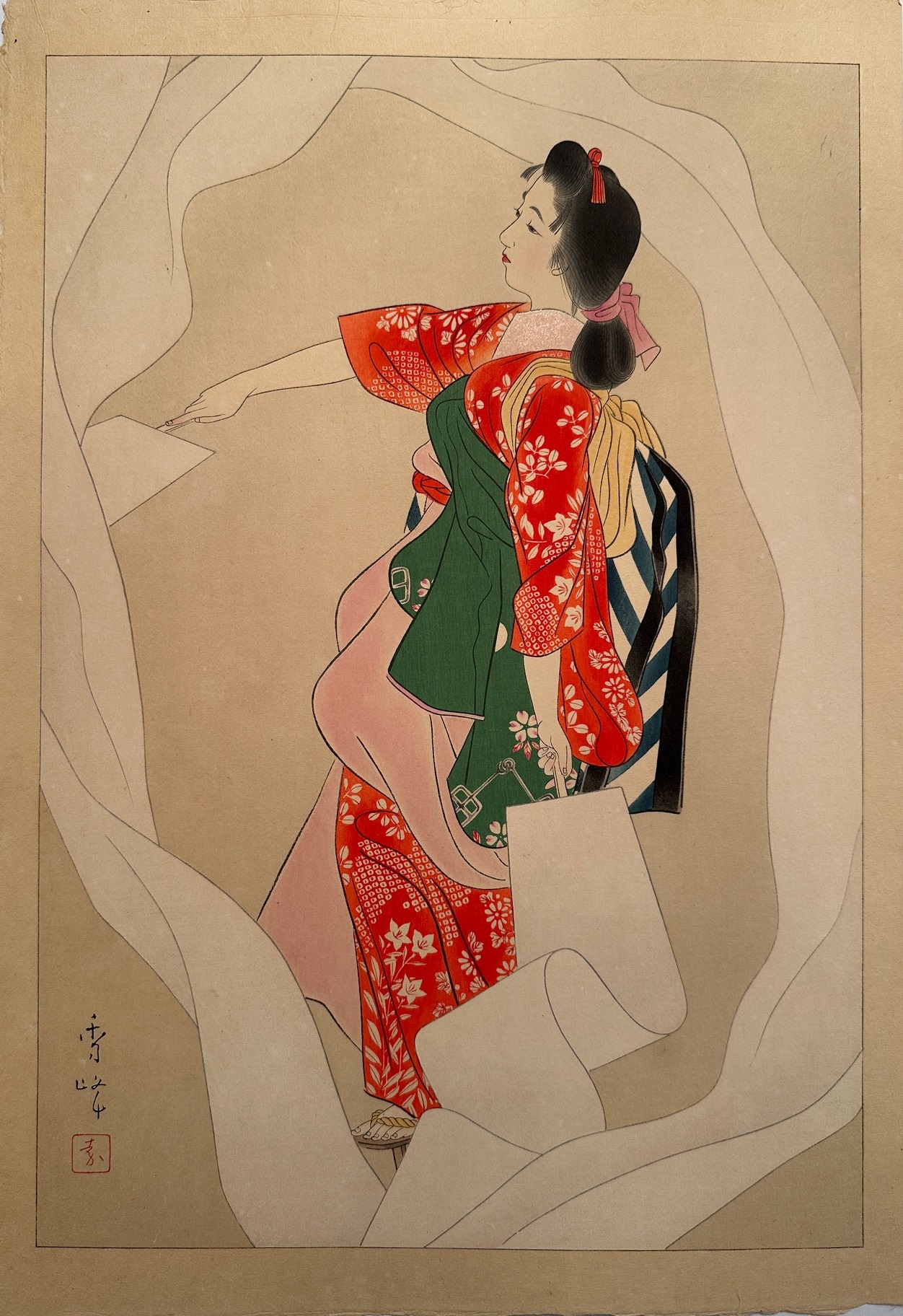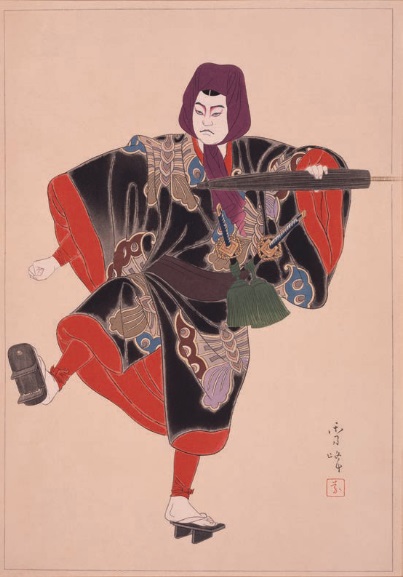
[Echigo Lion] Echigo Jishi (越後獅子)
Dance: Echigo Jishi (越後獅子)
Print Date: 1936
Series: [Fifty Dances] Odori GojyŻban (踊り五十番)
Image courtesy of Artelino.com
YAMAKAWA SHŘH‘ (山川秀峰)
1936

[Echigo Lion] Echigo Jishi (越後獅子)
Dance: Echigo Jishi (越後獅子)
Print Date: 1936
Series: [Fifty Dances] Odori GojyŻban (踊り五十番)
Image courtesy of Artelino.com

Shigayama SanbasŰ (志賀山三番叟)
Dance: Shigayama SanbasŰ (志賀山三番叟)
Print Date: 1936
Series: [Fifty Dances] Odori GojyŻban (踊り五十番)
Image courtesy of Artelino.com

Ohare-me (大原女)
Dance: Ohare-me (大原女)
Print Date: 1936
Series: [Fifty Dances] Odori GojyŻban (踊り五十番)
Image courtesy of Artelino.com

Konkuwai (こんくわい)
Play: Konkuwai (こんくわい)
[Kurokawa version of Tsurigitsune (釣狐)]
Print Date: 1936
Series: [Fifty Dances] Odori GojyŻban (踊り五十番)
Image courtesy of Artelino.com

Kamuro (かむろ; 禿)
Dance: Hane no Kamuro (羽根の禿)
Print Date: 1936
Series: [Fifty Dances] Odori GojyŻban (踊り五十番)
Image courtesy of Artelino.com

Nuno-zarashi (布晒し)
Print Date: 1936
Series: ?
Personal Collection
Note: Although made the same year as the dance prints in
Odori
GojyŻban (踊り五十番), this print does not appear to be traditionally
considered part of that series. Technically speaking,
"Nuno-zarashi" is
not the name of a particular dance, but rather a technique seen in
Kabuki
and traditional Japanese dance, which involves the waving about of
two
long strips of cloth in the air so as not to let them touch the
ground.

GorŰ (五郎)
Dance: ?
Print Date: 1936
Series: [Fifty Dances] Odori GojyŻban (踊り五十番)